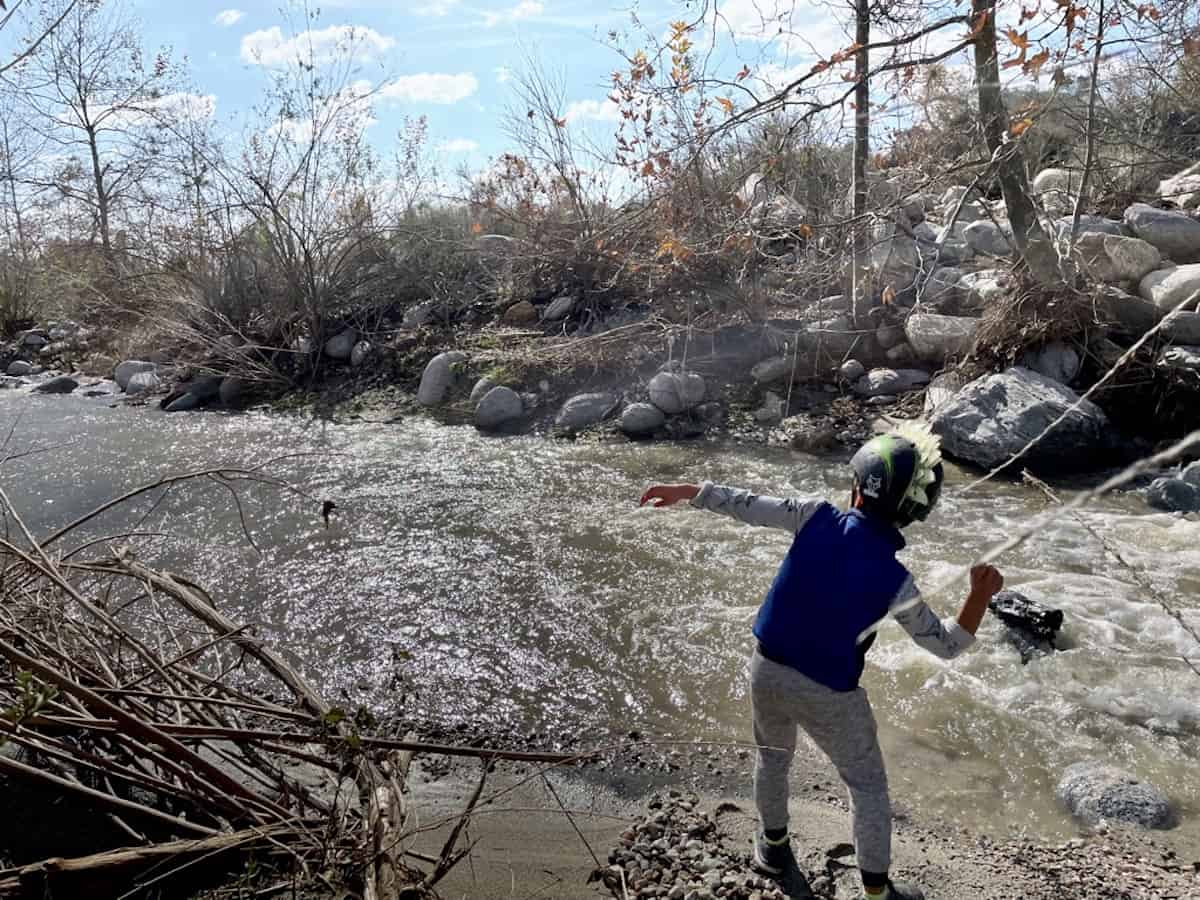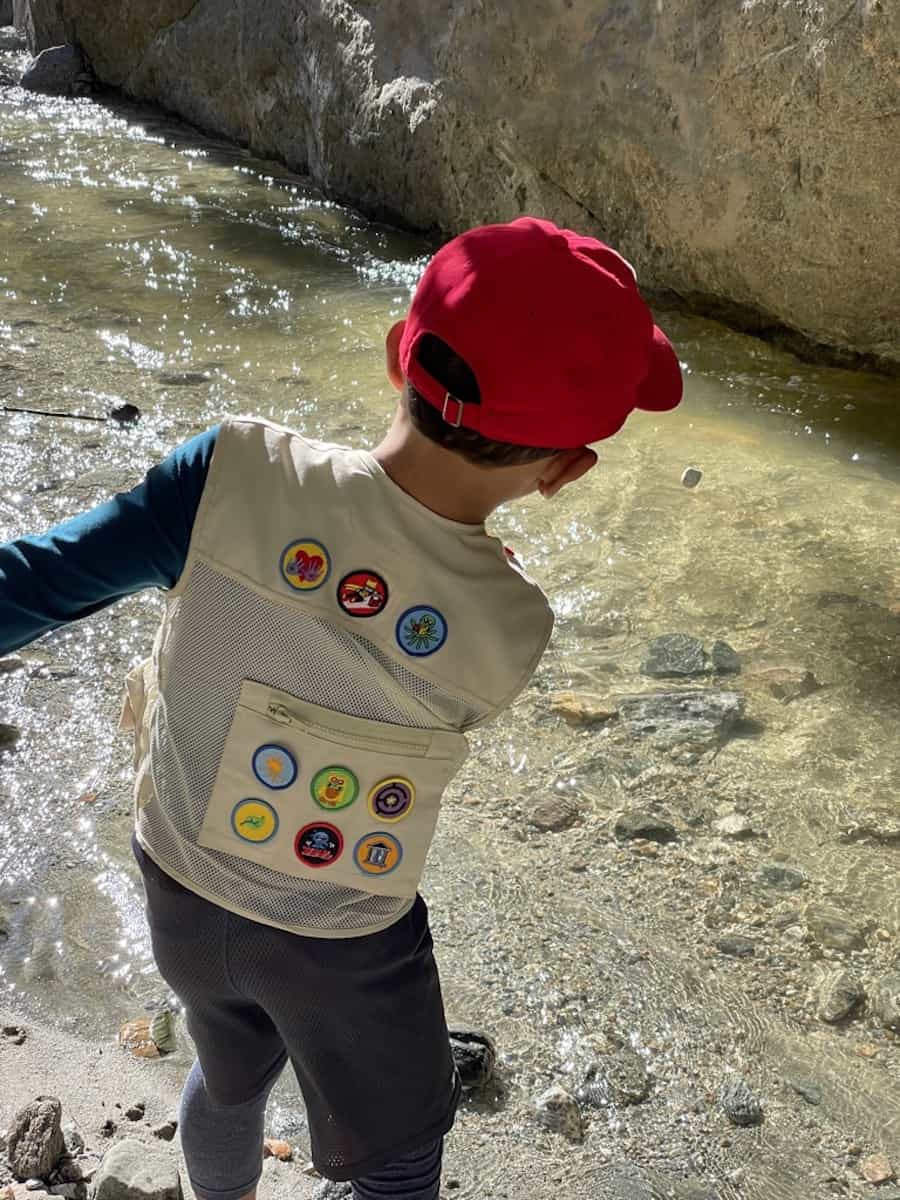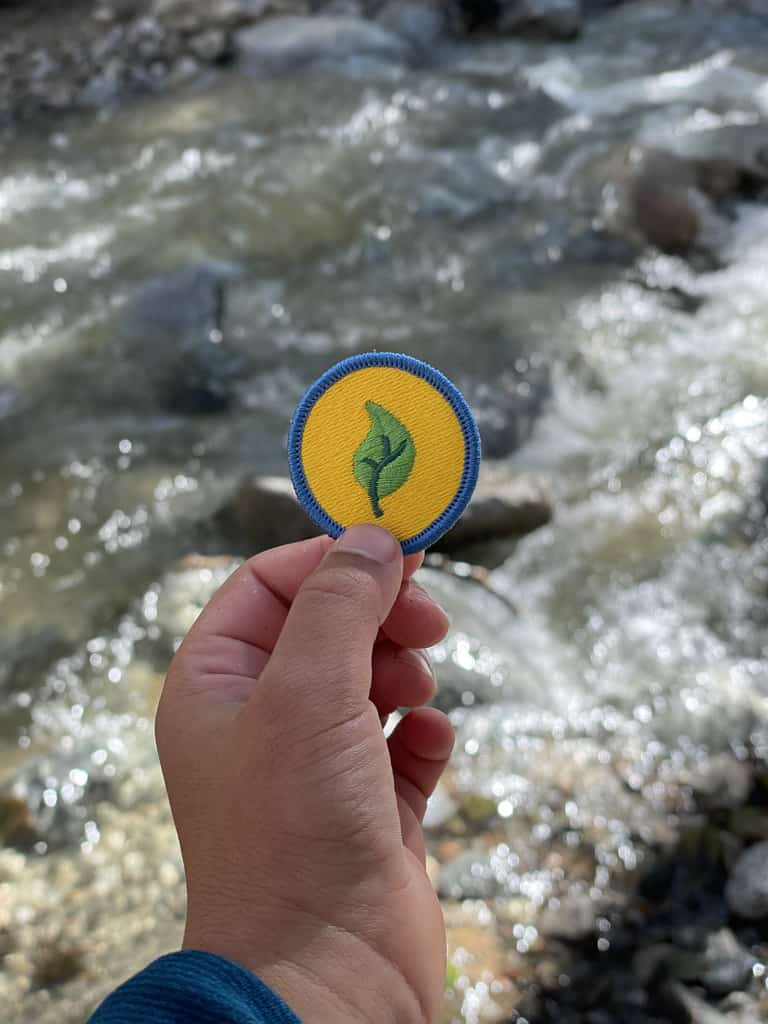Skipping stones is a super fun and easy outdoor activity for kids of all ages. It’s also a great way to begin teaching kids about physics and the science behind bouncing rocks on water! Today, Michelle Garrett, California mom and founder of Wonder Club Explorers is here with all the info you need to know to get started teaching your kids how to skip stones. She’s covering the basics from how to choose the perfect flat skipping rock, to the right technique for extra skips. So, the next time you head out to the lake, pond or creek, we hope you’ll give rock skipping a try!

Learning the art of stone skipping
When you approach a body of water, be it a stream, lake, pond, or ocean, what are you inclined to do:
A) Walk, wade, or jump into the water
B) Gaze at the water and think deep thoughts
C) Pick up a stone and start skimming it across the water
While there is absolutely no wrong answer here, for many years I would have toggled between options A & B. Mainly that’s because as an adult, I didn’t know how to skip stones! I’m not sure how it happened, but I seemed to have missed that chapter of childhood. I hope I’m not the only adult in this pickle!
Fortunately, my husband quickly remedied the situation and became my rock skipping coach. He took it upon himself to teach me how to skip stones and the fun of this super simple outdoor activity. I was so excited to be a purveyor of this newfound talent that I couldn’t wait to teach my son how to do the same. Now that I find myself squarely in camp option C, I am happy to share with the Run Wild My Child community the physics and fun of skipping stones.
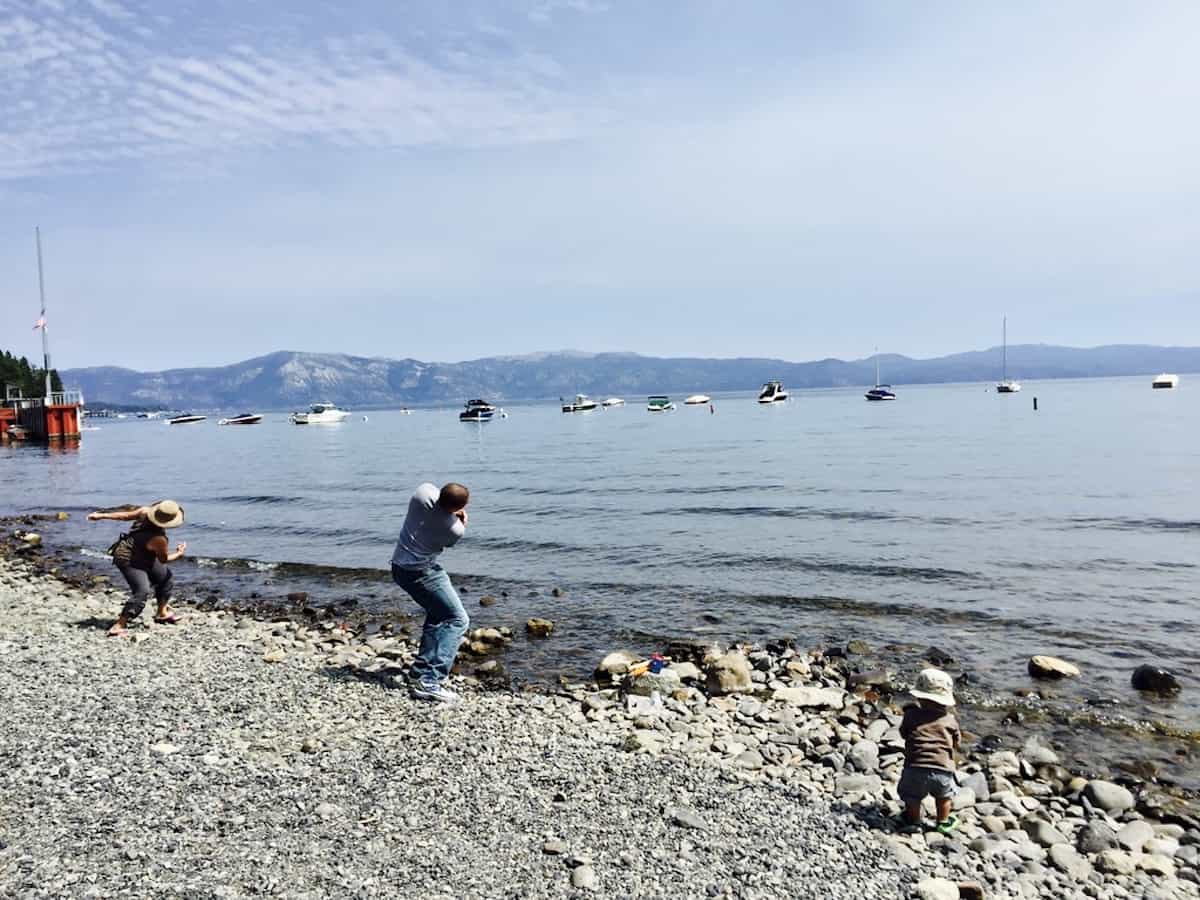
Teaching kids how to skip stones
Throwing rocks into the water and making a huge splash is fun for all kids. But, learning how to skip a rock is a childhood wonder! It seems like skipping rocks should be impossible! Rocks are heavy and they sink in water. Skimming stones across the surface of the water seems almost magical to a child and it’s a blast (for both the child and the adult) practicing and perfecting your technique.
Today, I’ll walk you through the basics of how to skip stones and how to teach your children to skip stones. We’ll go over how to choose the perfect skipping rock, the right throwing technique, and the physics behind how to make rocks bounce on water!

The history of skipping stones
The first written record of stone skipping dates back to 1583. Who knew that skipping stones has such a long history? Legend has it that an English King skipped sovereigns (a.k.a British coins) across the River Thames in London, England. And stone skipping appeared in the written works of Shakespeare and Homer.
Culturally speaking, stone skipping has its own unique word or term across different languages and cultures. In France, when one skips a stone, it’s referred to as ricochet. In Denmark, skipping stones is called snuffing. The Eskimos skip rocks on ice while Bedouins skip rocks across smooth sand. And, if you’re into pop culture, we even saw a character slide rocks across the ice in Game of Thrones!
Best stones for skippin’
When it comes to rocks and stones, no two skip alike. You’ll want to take a few minutes doing some rock-onnaissance (you know, looking for the types of stones most conducive to skipping) in order to find the perfect skipping stone. Because throwing the stone is only half the battle, you also need to carefully choose the right rock for skipping.
Flattish stones that aren’t perfectly shaped, but have a uniform thickness and a little heft seem to work best. Helf is important because the rock needs weight in order to be thrown well. Imagine you’d have a hard time skipping a cracker or a paperweight across the water. The uniform thickness means that the weight is equally distributed and the rock won’t flip end over end when thrown. And the stone’s flatness maximizes its lift and provides a landing/bouncing surface.
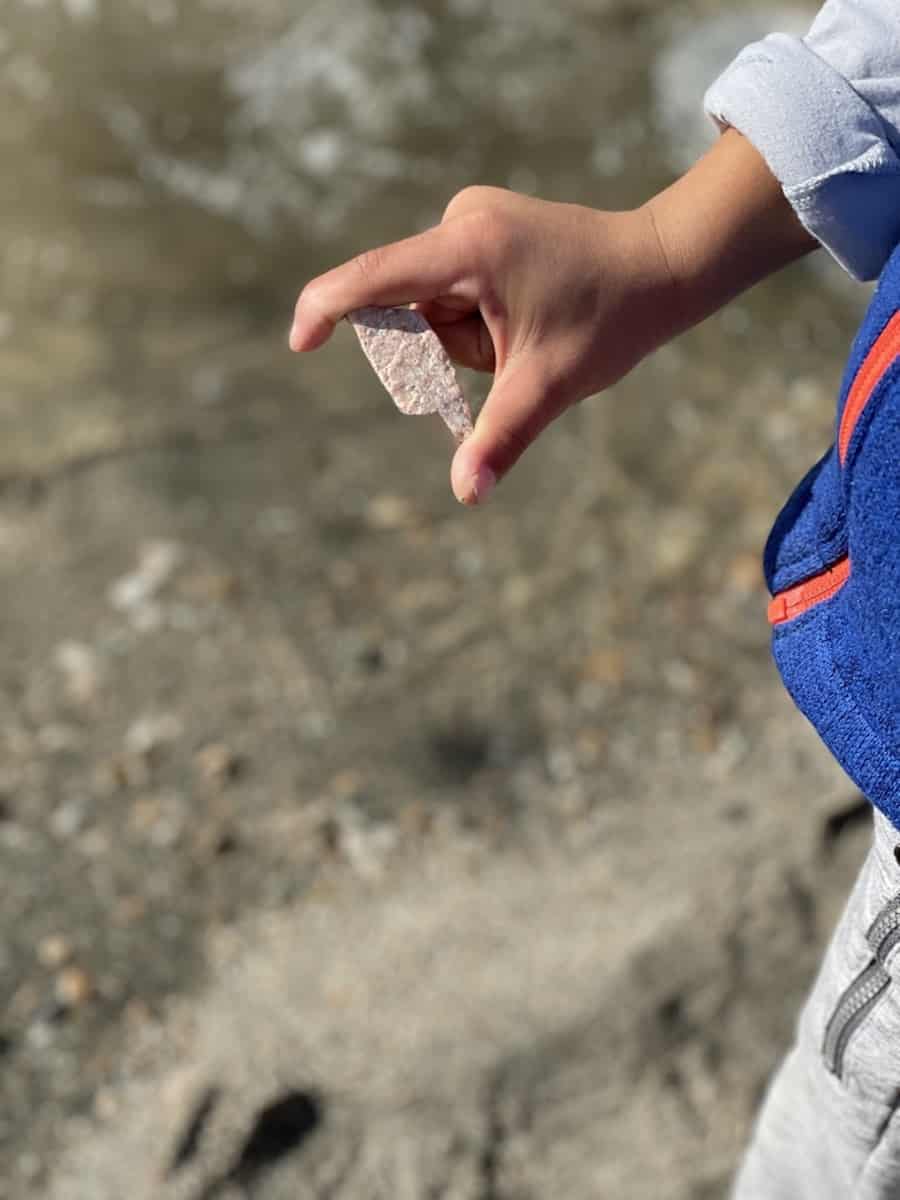
Find flat water
The best places to skip stones are bodies of water that have a nice wide flat surface. Lakes and ponds are ideal. Rivers and streams can work, but you need a stretch of open water and few obstacles. Ocean and swift-moving rivers are tough due to the waves and uneven surface of the water. When you’re practicing your stone skimming, you’ll want to look for the best option and a place with lots of available rocks!
The best stone skipping technique: it’s all in the wrist
Once you’ve selected a nice flat stone, the next step is mastering how to hold it. You’ll want to set the rock in the crook of your pointed finger and thumb. Then, curl your other fingers beneath it. Holding a rock in this fashion helps to set it up for a fast spin, which is needed to skip along the water’s surface.
Next, you’ll want to stand up straight, feet parallel to the water, with your wrist cocked high above your shoulder. From there, throw the stone down and release the stone at your side, as parallel to the water as possible. A good throw is all in the wrist. It’s important to throw the stone from the side angle (much like a baseball pitcher might throw a curveball) because an overhand or overhand throw will only sink your stone, not skip it.
The physics of skipping stones
Skipping stones is a super fun way to pass time in nature. It is also an excellent way to scratch the surface of subjects like science and physics with kids. The physics behind successful stone skipping is pretty simple.
There are two key forces at work when skipping rocks: (1) gravity (which pulls the rock down) and (2) lift (which pushes the stone up). For successful stone skipping, the lift force needs to be greater or the stone will sink. For this to happen, attention to the type of rock and the thrower’s form is important.
When a rock is thrown with enough force (velocity) and spin at the right angle, it creates a small wave of air. That wave pushes the stone as it hits the surface of the water. When the velocity of the stone is greater than the lift force of the wave, the rock will continue to rise up and skip off the surface of the water again and again until maxed out and then the rock will sink.
The gyroscopic effect (spinning) stabilizes the stone as it bounces along the water. As long as it is spinning fast enough, the spinning will prevent it from tipping over and/or sinking into the water. This is similar to a spinning top – it has to be spinning fast enough to stay upright.
To read more about the science behind skipping stones, Surfer Today has an excellent article about the fluid dynamics and physics behind this fun activity.
Stone skipping trivia for kids
In case you ever find yourself as a contestant on Jeopardy or simply want to impress the family with a few fun factoids, here are a few stone skipping trivia gems for you:
- The magic angle between a skipping stone and water is 20 degrees.
- The distance between stone skips is usually 80% of the previous skip.
- The world record number of skips is currently 88 consecutive skips, set by Kurt Steiner! Here’s a video documenting that world record.
- A right-handed throw will result in skips that eventually veer to the right.
Earn a Nature Explorer patch for skipping stones
Being out and about in nature is just one of the many joys we should all be so lucky to experience. That’s one of the reasons that the Nature Explorer Patch is one of the first 18 patches to be released as part of the Wonder Club Explorers program. Wonder Club Explorers is an independent scouting program for kids. Through Wonder Club Explorers, kids earn colorful patches doing age-appropriate activities with parents and caregivers. And, yep, skipping stones can constitute being a Nature Explorer! Stone skipping with kids is a great way to get outside and learn about nature and science. Your child’s first Nature Explorer patch is only a stone skip away!

Stone skipping fun for kids
The next time you find yourself next to a body of water feel confident knowing you have all the insider tips, tricks, and trivia to make you a confident stone thrower. Stone skipping with kids can be a lot of fun, gets you outside and active, and is completely free! You can turn skipping stones into a healthy competition or a fun game. In our family, we have yet to make it into the Guinness Book of World Record or get invited to the world championships, but my son skipped a stone FOUR times on our last outing. He is stoked!
We can’t wait to venture out again and find ourselves a stream, pond, or calm ocean in which to toss a stone. Have fun and remember to tag #runwildmychild and #wonderclubexplorers on your next outdoor adventure. Until next time!

About the author
Michelle spends her days working on projects to improve the quality of life for the citizens of her community and her nights reading books to her 6-year-old about every kind of dinosaur there ever was (there are 900 validated species, in case you’re wondering). Together with her son, Michelle created Wonder Club Explorers, a company to inspire wonder and curiosity in kids. She carves out time for herself on the weekends as an early morning exerciser and metalsmith of fine jewelry. Michelle is also the co-host of the Run Wild My Child podcast. She resides in Altadena with her husband and son amongst California Oak trees and a stone’s throw of the San Gabriel Mountains.
You can find Michelle online in the following locations:
Instagram: @wonderclubexplorers
Website: www.wonderclubexplorers.co
RWMC posts: Michelle Garrett

